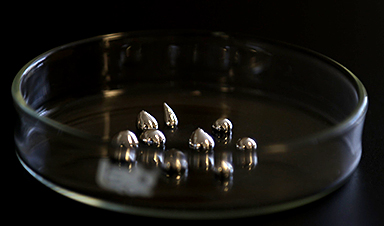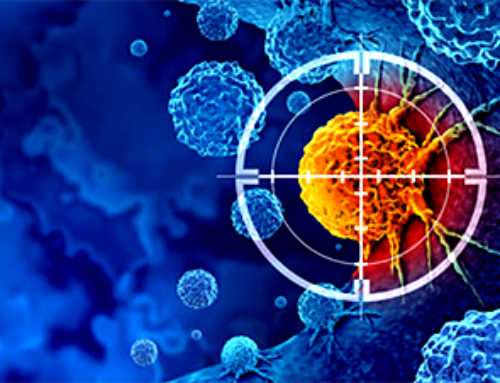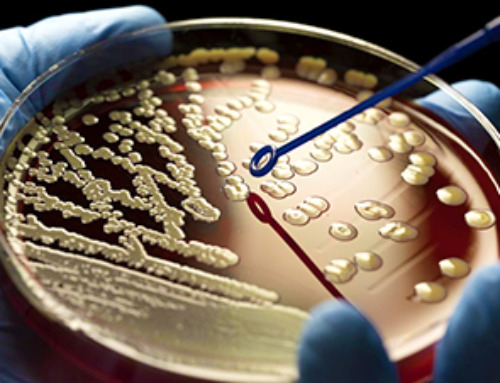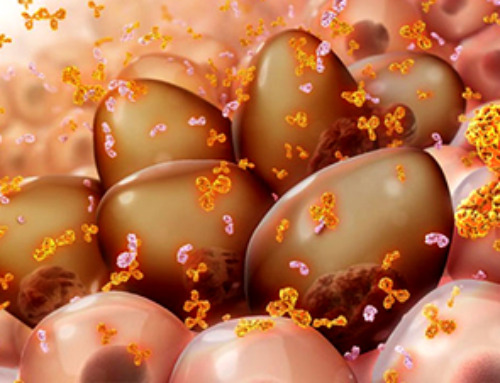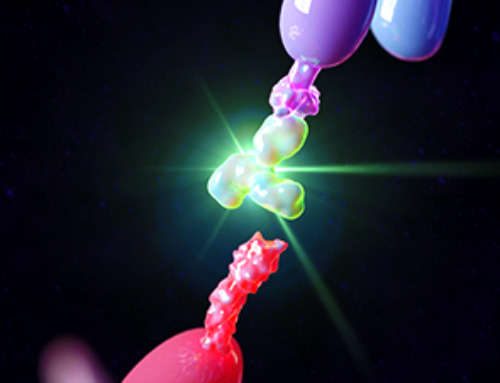Liquid metals could be the long-awaited solution to “greening” the chemical industry, according to researchers who tested a new technique they hope can replace energy-intensive chemical engineering processes harking back to the early 20th century.
Findings published in Nature Nanotechnology offer a much-needed innovation that moves away from old, energy-intensive catalysts made from solid materials. The research is led by Professor Kourosh Kalantar-Zadeh, Head of the University of Sydney’s School of Chemical and Biomolecular Engineering, and Dr. Junma Tang, who works jointly at the University of Sydney and UNSW.
A catalyst is a substance that makes chemical reactions occur faster and more easily without participating in the reaction. Solid catalysts, typically solid metals or solid compounds of metals, are commonly used in the chemical industry to make plastics, fertilizers, fuels and feedstock.
However, chemical production using solid processes is energy intensive, requiring temperatures of up to a thousand degrees centigrade.
The new process instead uses liquid metals, in this case dissolving tin and nickel which gives them unique mobility, enabling them to migrate to the surface of liquid metals and react with input molecules such as canola oil. This results in the rotation, fragmentation, and reassembly of canola oil molecules into smaller organic chains, including propylene, a high-energy fuel crucial for many industries.
“Our method offers an unparalleled possibility to the chemical industry for reducing energy consumption and greening chemical reactions,” said Professor Kalantar-Zadeh.
“It’s expected that the chemical sector will account for more than 20% of emissions by 2050,” said Professor Kalantar-Zadeh. “But chemical manufacturing is much less visible than other sectors—a paradigm shift is vital.”
How the process works
Atoms in liquid metals are more randomly arranged and have greater freedom of movement than solids. This allows them to easily come into contact with, and participate in, chemical reactions. “Theoretically, they can catalyze chemicals at much lower temperatures—meaning they require far less energy,” Professor Kalantar-Zadeh said.
In their research, the authors dissolved high melting point nickel and tin in a gallium based liquid metal with a melting point of only 30° centigrade.
“By dissolving nickel in liquid gallium, we gained access to liquid nickel at very low temperatures—acting as a ‘super’ catalyst. In comparison solid nickel’s melting point is 1,455° centigrade. The same effect, to a lesser degree, is also experienced for tin metal in liquid gallium,” Dr. Tang said.
The metals were dispersed in liquid metal solvents at the atomic level. “So we have access to single atom catalysts. Single atom is the highest surface area accessibility for catalysis which offer a remarkable advantage to the chemical industry,” said Dr. Arifur Rahim, senior author and DECRA Fellow at the School of Chemical and Biomolecular Engineering.
The researchers said their formula could also be used for other chemical reactions by mixing metals using the low temperature processes.
“It requires such low temperature to catalyze that we could even theoretically do it in the kitchen with the gas cooktop—but don’t try that at home,” Dr. Tang said.
More information: Dynamic configurations of metallic atoms in the liquid state for selective propylene synthesis, Nature Nanotechnology (2023). DOI: 10.1038/s41565-023-01540-x
Journal information: Nature Nanotechnology
News
Team finds flawed data in recent study relevant to coronavirus antiviral development
The COVID pandemic illustrated how urgently we need antiviral medications capable of treating coronavirus infections. To aid this effort, researchers quickly homed in on part of SARS-CoV-2's molecular structure known as the NiRAN domain—an [...]
Drug-Coated Neural Implants Reduce Immune Rejection
Summary: A new study shows that coating neural prosthetic implants with the anti-inflammatory drug dexamethasone helps reduce the body’s immune response and scar tissue formation. This strategy enhances the long-term performance and stability of electrodes [...]
Scientists discover cancer-fighting bacteria that ‘soak up’ forever chemicals in the body
A family of healthy bacteria may help 'soak up' toxic forever chemicals in the body, warding off their cancerous effects. Forever chemicals, also known as PFAS (per- and polyfluoroalkyl substances), are toxic chemicals that [...]
Johns Hopkins Researchers Uncover a New Way To Kill Cancer Cells
A new study reveals that blocking ribosomal RNA production rewires cancer cell behavior and could help treat genetically unstable tumors. Researchers at the Johns Hopkins Kimmel Cancer Center and the Department of Radiation Oncology and Molecular [...]
AI matches doctors in mapping lung tumors for radiation therapy
In radiation therapy, precision can save lives. Oncologists must carefully map the size and location of a tumor before delivering high-dose radiation to destroy cancer cells while sparing healthy tissue. But this process, called [...]
Scientists Finally “See” Key Protein That Controls Inflammation
Researchers used advanced microscopy to uncover important protein structures. For the first time, two important protein structures in the human body are being visualized, thanks in part to cutting-edge technology at the University of [...]
AI tool detects 9 types of dementia from a single brain scan
Mayo Clinic researchers have developed a new artificial intelligence (AI) tool that helps clinicians identify brain activity patterns linked to nine types of dementia, including Alzheimer's disease, using a single, widely available scan—a transformative [...]
Is plastic packaging putting more than just food on your plate?
New research reveals that common food packaging and utensils can shed microscopic plastics into our food, prompting urgent calls for stricter testing and updated regulations to protect public health. Beyond microplastics: The analysis intentionally [...]
Aging Spreads Through the Bloodstream
Summary: New research reveals that aging isn’t just a local cellular process—it can spread throughout the body via the bloodstream. A redox-sensitive protein called ReHMGB1, secreted by senescent cells, was found to trigger aging features [...]
AI and nanomedicine find rare biomarkers for prostrate cancer and atherosclerosis
Imagine a stadium packed with 75,000 fans, all wearing green and white jerseys—except one person in a solid green shirt. Finding that person would be tough. That's how hard it is for scientists to [...]
Are Pesticides Breeding the Next Pandemic? Experts Warn of Fungal Superbugs
Fungicides used in agriculture have been linked to an increase in resistance to antifungal drugs in both humans and animals. Fungal infections are on the rise, and two UC Davis infectious disease experts, Dr. George Thompson [...]
Scientists Crack the 500-Million-Year-Old Code That Controls Your Immune System
A collaborative team from Penn Medicine and Penn Engineering has uncovered the mathematical principles behind a 500-million-year-old protein network that determines whether foreign materials are recognized as friend or foe. How does your body [...]
Team discovers how tiny parts of cells stay organized, new insights for blocking cancer growth
A team of international researchers led by scientists at City of Hope provides the most thorough account yet of an elusive target for cancer treatment. Published in Science Advances, the study suggests a complex signaling [...]
Nanomaterials in Ophthalmology: A Review
Eye diseases are becoming more common. In 2020, over 250 million people had mild vision problems, and 295 million experienced moderate to severe ocular conditions. In response, researchers are turning to nanotechnology and nanomaterials—tools that are transforming [...]
Natural Plant Extract Removes up to 90% of Microplastics From Water
Researchers found that natural polymers derived from okra and fenugreek are highly effective at removing microplastics from water. The same sticky substances that make okra slimy and give fenugreek its gel-like texture could help [...]
Instant coffee may damage your eyes, genetic study finds
A new genetic study shows that just one extra cup of instant coffee a day could significantly increase your risk of developing dry AMD, shedding fresh light on how our daily beverage choices may [...]
